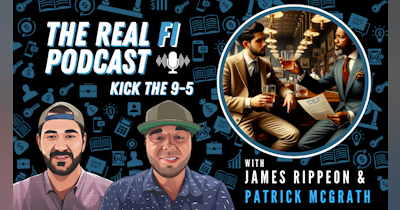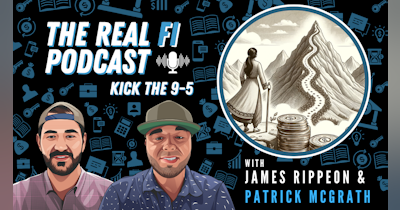Now that you’ve got your savings in order and are finally piling up some cash, it’s time to put your money to work! Every dollar serves a purpose. While idle money doesn’t create cash flow, having something set aside for times when it could be needed is important. You never know when an unexpected medical or home expense is going to arise.
When thinking about putting your money to work in the early stages of wealth building, it’s important to distinguish between cash and liquid investment accounts. I break this down into three categories: (1) the emergency cash fund; (2) a liquid investment account for emergencies; and (3) future investment fund. Each serves a unique purpose and can be adjusted as your personal financial situation changes (grows!).
Cash Emergency Fund
At a minimum, you should save 3 months worth of your expenses in cold hard cash. You never know what kind of emergencies might come up, so having a little cash set aside will go a long way to offering you some security. Job loss, caring for an elderly family member, the birth of a child–planned and unexpected life events can require you to commit time to tasks that represent an opportunity cost in the sense that you aren’t going to be compensated for them. At times life can be more important than making money, so put yourself in a position to have time to do the things that mean the most to you.
Plenty of gurus suggest that you hold at least 6 months of expenses in cash. While more cash never hurt, there is an opportunity cost with keeping cash as opposed to investing that money. It’s all a sliding scale and you’re adult enough to figure out the savings and investment amounts that best suits your life, but the point is that you need to be cognizant of how much you have available to you in cash, while paying attention to what investment opportunities could be pursued.
Once you’ve settled on how many months worth of expenses you’d like to have saved to feel secure, it’s time to do the math. Add up all of your common monthly expenses, such as your mortgage, car payment, insurance, subscriptions, groceries, and miscellaneous expenses, add 10% to that amount as a buffer, then multiply that by the number of months you’re planning to hold as an emergency fund. This should provide you with a conservative number for how much cash you need to keep an account somewhere. Here’s an example:
Mortgage: $1,350/month
Daycare: $965/month
Car Payment: $550/month
Insurance: $65/month
Groceries: $375/month
Subscriptions: $75/month
Miscellaneous: $250/month
TOTAL EXPENSES: $3,630/month
Expenses w/ 10% Buffer: $3,993/month
X3 Months: $11,979 Cash Emergency Fund
The purpose of this cash is not to spend it or invest it–it is a fallback position for a worst case scenario. It needs to be enough to hold you over until you are able to liquidate other assets to get the amount of money that you may end up needing.
If you’re anything like me, you’re going to be facing one of two temptations with this emergency fund–spend it or invest it. A pro tip to avoid these temptations is to keep your emergency fund in an account that you don’t have regular access to. This might require that you start an account at a new bank and not download the application to your smartphone. Out of sight, out of mind.
Once you’ve saved up your cash emergency fund, it’s time to focus on some investing.
Oh-Shit Liquid Investment Account
When it comes to money, I’m always thinking about the opportunity cost where to best put it. I’ve never been one to keep a lot of cash on hand because I’m always thinking to myself, “this money would be better off invested!” That’s why it’s a great strategy to create an intermediary account between your emergency fund and your investment accounts to help cover emergencies, but at the same time have those funds working for you.
I call this the “Oh-Shit Liquid Investment Account.” This particular account would invest an amount in addition to your emergency cash fund to provide highly liquid funds that could be available in the case of a catastrophic emergency. If I’m holding 3 months in cash in an account that is out of sight, but I’d truly only feel secure if I had a full 12 months of savings available, then this “Oh-Shit Liquid Investment Account” is where I’d make up the difference for the remaining 9 months..
Using the same math for the emergency fund, figure out how much you need to have invested to meet your goal. This investment account can be used for making up the difference with your emergency fund, but the benefit is that it is invested and ideally will be continuing to grow into the future.
Expenses w/ 10% Buffer: $3,993/month
X9 Months: $35,937 Oh-Shit Liquid Investment Account
The point of this account is that it remains highly liquid and accessible if you completely draw down on your emergency cash fund. What you choose to invest in with this account is entirely up to you, but the general point is to be on the conservative side. This should be a “set it and forget it” kind of account, so don’t plan to trade or sell anything that you buy. My preference would be indexed funds with low fees. After you’ve fully funded your account and invested an amount that makes you feel good, let it ride. We’re not trying to maximize returns here. As I say, “don’t gamble your insurance policy.”
Future Investment Fund
Now that we’ve got our security funds and account in place, it’s time to focus on the bigger investment picture. Sure, you can get to a million dollars with index fund investing over 30 years pretty easily, but that’s not much of an ambitious goal after inflation eats away at that purchasing power. My conversations with multi-millionaires have led me to the opinion that true wealth is created by starting businesses and directly controlling cash producing assets, such as value-add real estate. As opposed to index fund investing, there are barriers to entry with business and real estate: capital and patience.
That all being said, slow and steady index fund investing can be a tool that we use to get into true wealth-building assets described above. Let me explain.
Investing takes time, and if you’re looking to turn a quick buck you’re going to have a lot of troubles ahead. Good investing is all about the duration of time invested and not losing purchasing power along the way. Basically, we need to harness the benefit of compound interest by putting our cash to work as quickly as possible, adding to it consistently, and then scaling up to better and more profitable investments.
Here is where a “Future Investment Fund” comes into play. This fund will be used to grow your money with the anticipated plan of liquidating the assets and parlaying those funds into a private business or real estate deal. It could take a few years to build up an account sizable enough to make this move. I cannot stress this enough–to have a meaningful amount of capital available to be a serious investor, it will take work to earn money and time to invest it and allow it to grow. The roadmap is simple–invest in the Future Investment Fund every chance you get, with every spare dollar, until you can redeploy that capital.
Don’t try to get too cute with this investment account by trading options or investing in penny stocks. Use this investment account to buy assets that will appreciate with time and grow your purchasing power. Use your own discretion and don’t be dumb. I’ll keep it at that.
Let’s reverse engineer a hypothetical wealth plan. Now that we’re saving up in an investment account that we’ll plan to use for future business or real estate investments, let’s determine what our specific plan needs to be.
Let’s say that your goal is to get into real estate so that you can own appreciating property, collect rental cash flow, and eventually grow your portfolio to be large enough so that your job becomes managing your real estate as a business. Let’s say that you currently pay $75,000 per year in property management fees to a third party manager, but you would like to eventually take over management and pocket that $75,000 as your own salary. Here’s what that math might look like.
Desired Salary: $75,000 @ 10% Management Fee
Gross Rental Income: $750,000/year | $62,500/month
Est. Portfolio Value: $5,250,000
Assuming a 10% management fee, you’d need to have a real estate portfolio of more than five million dollars to pay yourself $75,000 in management fees. Did I mention that not many people are born with that kind of money?
Getting to this point in your investment career takes time, but if we get started today we can make it happen. Given this chosen path to get to approximately five million dollars in real estate assets, let’s assume that the first step towards that goal is to take down your first multi-family investment property.
If you're looking at a $325,000 property, then you should anticipate having 40% of the purchase price available in cash to cover closing costs, down payment, and reserves, then add 20% to that figure to account for taxes. Remember, we’re saving up for this major investment in the Future Investment Fund. Since those funds are invested, we have to anticipate paying long-term capital gains once we sell and transition those funds to real estate. It’s worth mentioning again–we’re trying to minimize headache and taxes, so don’t be trading in this account. Buy assets such as index funds and plan to hold for the long-run until you have long-term capital gains assets equal to the amount of cash required. We should be as tax-efficient as possible to preserve purchasing power and lower tax liabilities. Here is what the math looks like:
Multi-Family Purchase Price: ($325,000)
25% Down, 5% Closing Costs, 10% Reserves: $130,000
20% Capital Gains on Future Investment Fund: $26,000
Total Future Investment Fund Value: $156,000
There we have it. To purchase our first multi-family property in the example above, it’s going to start with saving up $156,000 in investments through our Future Investment Fund. It will take time, it will take patience, and it will take discipline. But, the plan is simple and actionable. Invest all that you can as often as you can, and compound interest will take care of the rest for you.
Finally, repeat.
Let’s kick the 9-5!
Decide. Commit. Take Action.







